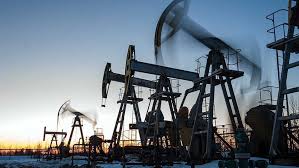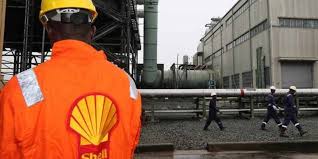Oil & Energy
Standard Chartered: Oil Demand Not As Bearish As Imagined

Oil prices have been on the backfoot in the current week, pulling back from gains in recent weeks, thanks to easing geopolitical fears and seemingly never-ending demand concerns.
On Monday, United States Secretary of State, Antony Blinken, announced that Israeli Prime Minister, Benjamin Netanyahu, had accepted a cease-fire proposal to stop the war in Gaza, but on Thursday, sources close to the White House reported that such a deal is once again out of reach as Hamas is unlikely to accept the Israeli terms, which include the occupation of the Philadelphi corridor, which Israel claims has given Hamas a strategic lifeline.
Crude oil futures fell significantly on Wednesday, with WTI crude falling to $72 per barrel and Brent crude falling briefly into the $75 dollar handle. Prospects of weak demand in China offset any gains from risks to supply, with government data showing that crude demand in the country fell 8per cent Y/Y in July.
Commodity analysts at Standard Chartered have been able to gauge crude demand on a global scale following the release of Joint Oil Data Initiative (JODI) data on 19 August.
According to StanChart, global oil demand in June clocked in at a healthy 103.01 million barrels per day (mb/d), an all-time high.
Following JODI revisions, StanChart estimates that May demand came in at 102.68 mb/d, the second-highest monthly average after June. The average demand growth for the second quarter was 1.521 mb/d y/y, close to StanChart’s forecast for 2024 full-year growth (1.514 mb/d).
The only bearish data point in that report is that demand growth has been slowing, with June demand growth clocking in at 788 thousand barrels per day (kb/d), a deceleration from 1.267 mb/d in May and 2.129 mb/d in April. StanChart has predicted that global demand will remain above 103 mb/d for the rest of 2024, before falling to 101.9 mb/d in January due to seasonality.
Meanwhile, global crude supply growth remains muted, with June supply increasing by 160 kb/d m/m to 102.097 mb/d, well below December 2023’s all-time high of 103.162 mb/d.
Constrained global supply growth can largely be chalked up to weak non-OPEC growth, particularly by the U.S. Oil production in the United States is set to grow just 2.3per cent in the current year as shale producers stick to production discipline and goal to return capital to shareholders.
Crude exports from U.S. ports have averaged 4.2 million barrels per day so far this year, up a mere 3.5per centY/Y compared to a robust 13.5per cent growth in 2023. This year’s growth clip is the lowest since 2015, when the country lifted a 40-year federal ban on the export of domestic crude.
U.S. shale producers are simply not willing to drill more. High decline rates for shale wells usually sets in soon after commissioning, meaning extra well completions are required to offset declines from existing wells if output is to be maintained.
Earlier in the year, StanChart reported that the horizontal rig count started to decline sharply in early 2023 and is currently 20per cent below its post-pandemic peak after flatlining for the past six months.
The analysts point out that whereas the completion of previously drilled wells and technical change provide an offset, a significant fall in activity, more often than not, leads to a lagged decline in growth.
The big rally in Europe’s natural gas prices that kicked off in July appears to have run out of steam thanks to high inventory levels and easing supply jitters. Dutch front-month futures, Europe’s gas benchmark, were quoted at €37.22 per megawatt-hour on Monday at 1315 hrs ET, largely unchanged over the past 10 days but considerably higher than the price a month ago at €30.10 per megawatt-hour. The gas price rally in the United States has been more subdued, with Henry Hub prices trading at $2.15/MMBtu from $2.01/MMBtu a month ago.
According to the latest Gas Infrastructure Europe (GIE) data, EU gas inventories are on the verge of moving above the EU Commission’s 90% of capacity target 10 weeks earlier than the 1 November deadline.
Gas inventories stood at 104.23 billion cubic meters (bcm) on 18 August; good for a fill rate of 89.8per cent. German storage is already at 93.3per cent of capacity, well ahead of the country’s 1 September target of 65per cent.
Last month, the U.S. Energy Information Administration predicted that U.S. natural gas prices will rally strongly in the second half of the current year thanks to production cuts.
According to the EIA, the Henry Hub natural gas spot price will average almost $2.90 per million British thermal units (MMBtu) in 2H24, up from $2.10/MMBtu in 1H24, good for a nearly 40 per cent increase.
Kimani writes for Oilprice.com.
By: Alex Kimani
Oil & Energy
Nigeria Loses More Crude Oil Than Some OPEC Members – Nwoko

Nigeria’s losses due to crude oil theft has been said to be more significant than those of some other members of the Organisation of Petroleum Exporting Countries(OPEC).
The Chairman, Senate Ad- hoc Committee on Crude Oil Theft, Senator Ned Nwoko, made this known in an interview with newsmen in Abuja.
Nwoko noted with dismay the detrimental impact of the issue, which, he said include economic damage, environmental destruction, and its impact on host communities.
According to him, the theft was not only weakening the Naira, but also depriving the nation of vital revenue needed for infrastructure, healthcare, education and social development.
The Senator representing Delta North Senatorial District described the scale of the theft as staggering, with reports indicating losses of over 200,000 barrels per day.
Nwoko disclosed that the ad hoc committee on Crude Oil Theft, which he chairs, recently had a two-day public hearing on the rampant theft of crude oil through illegal bunkering, pipeline vandalism, and the systemic gaps in the regulation and surveillance of the nation’s petroleum resources.
According to him, the public hearing was a pivotal step in addressing one of the most pressing challenges facing the nation.
‘’Nigeria loses billions of dollars annually to crude oil theft. This is severely undermining our economy, weakening the Naira and depriving the nation of vital revenue needed for infrastructure, healthcare, education, and social development.
‘’The scale of this theft is staggering, with reports indicating losses of over 200,000 barrels per day more than some OPEC member nations produce.
‘’This criminal enterprise fuels corruption, funds illegal activities and devastates our environment through spills and pollution.
‘’The public hearing was not just another talk shop; it was a decisive platform to uncover the root causes of crude oil theft, bunkering and pipeline vandalism.
‘’It was a platform to evaluate the effectiveness of existing surveillance, monitoring, and enforcement mechanisms; Identify regulatory and legislative gaps that enable these crimes to thrive.
‘’It was also to engage stakeholders, security agencies, host communities, oil companies, regulators, and experts to proffer actionable solutions; and strengthen legal frameworks to ensure stricter penalties and more efficient prosecution of offenders”, he said.
Nwoko noted that Nigeria’s survival depended
Oil & Energy
Tap Into Offshore Oil, Gas Opportunities, SNEPCO Urges Companies

Shell Nigeria Exploration and Production Company Ltd. (SNEPCo) has called on Nigerian companies to position themselves strategically to take full advantage of the growing opportunities in upcoming offshore and shallow water oil and gas projects.
The Managing Director, SNEPCO, Ronald Adams, made the call at the 5th Nigerian Oil and Gas Opportunity Fair (NOGOF) Conference, held in Yenagoa, Bayelsa State, last Thursday.
Adams highlighted the major projects, including Bonga Southwest Aparo, Bonga North, and the Bonga Main Life Extension, as key areas where Nigerian businesses can grow their capacity and increase their involvement.
“Shell Nigeria Exploration and Production Company Ltd. (SNEPCo) says Nigerian companies have a lot to benefit if they are prepared to take advantage of more opportunities in its offshore and shallow water oil and gas projects.
“Projects such as Bonga Southwest Aparo, Bonga North and Bonga Main Life Extension could grow Nigerian businesses and improve their expertise if they applied themselves seriously to executing higher value contracts”, Adams stated.
Adams noted that SNEPCo pioneered Nigeria’s deepwater oil exploration with the Bonga development and has since played a key role in growing local industry capacity.
He emphasized that Nigerian businesses could expand in key areas like logistics, drilling, and the construction of vital equipment such as subsea systems, mooring units, and gas processing facilities.
The SNEPCO boss explained that since production began at the Bonga field in 2005, SNEPCo has worked closely with Nigerian contractors to build systems and develop a skilled workforce capable of delivering projects safely, on time, and within budget both in Nigeria and across West Africa.
According to him, this long-term support has enabled local firms to take on key roles in managing the Bonga Floating, Production, Storage and Offloading (FPSO) vessel, which reached a major milestone by producing its one-billion barrel of oil on February 3, 2023.
Oil & Energy
Administrator Assures Community Of Improved Power Supply

The Emohua Local Government Area Administrator, Franklin Ajinwo, has pledged to improve electricity distribution in Oduoha Ogbakiri and its environs.
Ajinwo made the pledge recently while playing host in a courtesy visit to the Oduoha Ogbakiri Wezina Council of Chiefs, in his office in Rumuakunde.
He stated that arrangements are underway to enhance available power, reduce frequent outages, and promote steady electricity supply.
The move, he said, was aimed at boosting small and medium-scale businesses in the area.
“The essence of power is not just to have light at night. It’s for those who can use it to enhance their businesses”, he said.
The Administrator, who commended the peaceful nature of Ogbakiri people, urged the Chiefs to continue in promoting peace and stability, saying “meaningful development can only thrive in a peaceful environment”.
He also charged the Chiefs to protect existing infrastructure while promising to address the challenges faced by the community.
Earlier, the Oduoha Ogbakiri Wezina Council of Chiefs, led by HRH Eze Goodluck Mekwa Eleni Ekenta XV, expressed gratitude to the Administrator over his appointment and pledged their support to his administration.
The chiefs highlighted challenges facing the community to include incessant power outage, need for new transformers, and the completion of Community Secondary School, Oduoha.
The visit underscored the community’s expectations from the LGA administration.
With Ajinwo’s assurance of enhancing electricity distribution and promoting development, the people of Oduoha Ogbakiri said they look forward to a brighter future.
By: King Onunwor

